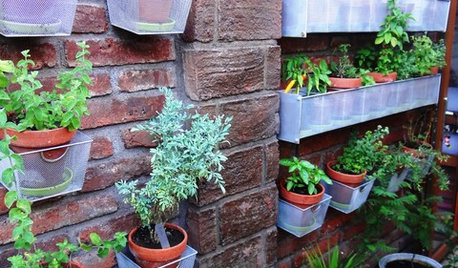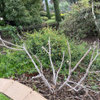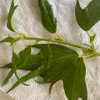need info and help if you please?
ladybugsmom192
13 years ago
Related Stories

GARDENING GUIDESGreat Design Plant: Ceanothus Pleases With Nectar and Fragrant Blooms
West Coast natives: The blue flowers of drought-tolerant ceanothus draw the eye and help support local wildlife too
Full Story
GARDENING GUIDES9 Fresh Herbs for Crowd-Pleasing Thanksgiving Dishes
Pluck these herbs from a windowsill pot or a garden for a Thanksgiving meal that sings with fresh flavor
Full Story
ORGANIZINGDo It for the Kids! A Few Routines Help a Home Run More Smoothly
Not a Naturally Organized person? These tips can help you tackle the onslaught of papers, meals, laundry — and even help you find your keys
Full Story
BATHROOM WORKBOOKStandard Fixture Dimensions and Measurements for a Primary Bath
Create a luxe bathroom that functions well with these key measurements and layout tips
Full Story
SELLING YOUR HOUSEHelp for Selling Your Home Faster — and Maybe for More
Prep your home properly before you put it on the market. Learn what tasks are worth the money and the best pros for the jobs
Full Story
LIFEDecluttering — How to Get the Help You Need
Don't worry if you can't shed stuff and organize alone; help is at your disposal
Full Story
GARDENING AND LANDSCAPINGBe a Citizen Scientist to Help Wildlife, Learn and Have Fun Too
Track butterflies, study birds, capture stars ... when you aid monitoring efforts, you’re lending Mother Nature a hand
Full Story
SELLING YOUR HOUSE10 Tricks to Help Your Bathroom Sell Your House
As with the kitchen, the bathroom is always a high priority for home buyers. Here’s how to showcase your bathroom so it looks its best
Full Story
WORKING WITH PROS5 Steps to Help You Hire the Right Contractor
Don't take chances on this all-important team member. Find the best general contractor for your remodel or new build by heeding this advice
Full Story








gardenguru1950
gardenerme
Related Professionals
Saint Charles Landscape Architects & Landscape Designers · Arlington Landscape Contractors · Berwyn Landscape Contractors · Desert Hot Springs Landscape Contractors · Englewood Landscape Contractors · Eustis Landscape Contractors · Parker Landscape Contractors · Tamarac Landscape Contractors · Kingsburg Landscape Contractors · Golden Glades Swimming Pool Builders · Rockwall Swimming Pool Builders · Alexandria Window Contractors · Homestead Window Contractors · Hutto Window Contractors · Payson Window Contractorshosenemesis
calistoga_al ca 15 usda 9
gardenguru1950
hosenemesis
gardenguru1950
ladybugsmom192Original Author